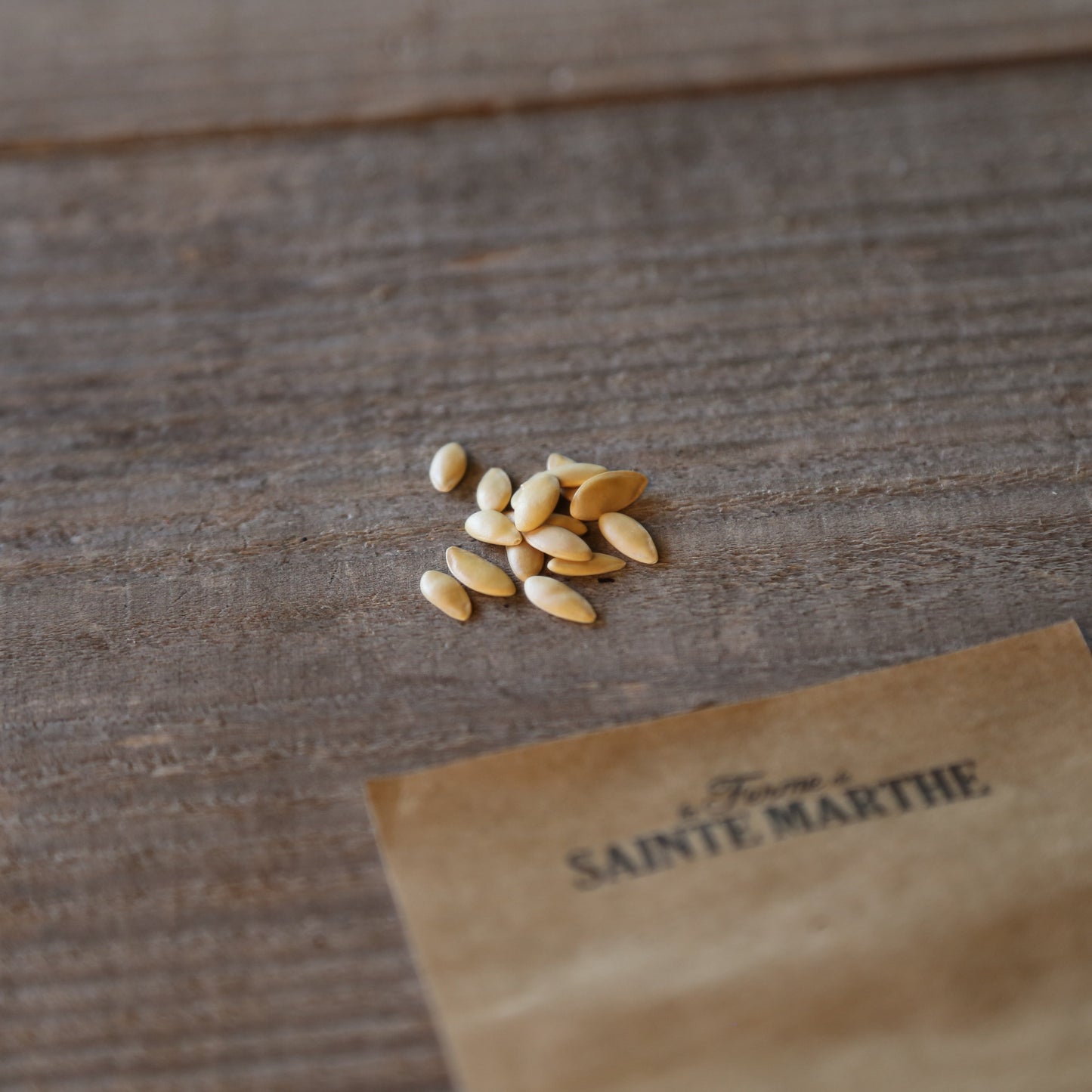MELON PRIDE OF WISCONSIN AB
Cucumis melo
The Petit Gris de Rennes melon is a productive, vigorous, and resistant variety, adapted to various climates, including those north of the Loire. Here are its characteristics:
- Fruits : Medium, 500 g to 800 g, 10 to 15 cm in diameter, rather smooth and green.
- Flesh : Light orange, sweet and tasty.
- Flowers : Hermaphrodites and male flowers on the same plant, without female flowers.
- Appearance : The young fruit is dark green, round in shape with a grayish background. The surface has white dots of medium density, without warts. The base is truncated, the apex is rounded. The furrows are strongly expressed, not very wide and shallow, and white in color.
How to successfully sow melons
Sowing melons in pots
Melons require plenty of warmth and light to germinate. The ideal temperature is between 24 and 35°C during the day, and it should not drop below 15°C at night. You can therefore sow your melon seeds in a hotbed or heated greenhouse in March/April and replant them in the garden after mid-May, when the risk of frost has passed.
Instructions for sowing in pots:
- Sow 2 to 3 seeds (point downwards) per pot, filled with fine seed compost, 1 cm deep.
- Water regularly, keeping the soil moist (but not soggy) using a sprayer.
- Place the seedlings in a bright location (near a window or in full light).
- Once the seedlings are planted, make sure they receive maximum light. Remove the weakest plants, keeping only the most vigorous ones.
Melon sowing in place
For warmer regions, such as the south of France or Mediterranean climates, it is possible to sow directly in the ground:
Instructions for sowing in place:
- Space each melon plant 80 cm to 1 m apart.
- Plant 2 to 3 seeds per pocket at a depth of 1.5 cm and cover with a mixture of sifted garden soil and mature compost.
- Use a cloche or a frame to shelter the seedlings at the beginning of the growing season.
- Keep only the most beautiful plant.
Melon planting
Depending on the region, you can plant young melon plants between April and mid-June. A plastic tunnel can be useful at the beginning of the growing season to provide more warmth. Melons prefer a warm location, a sunny exposure, and rich, deep soil with a good supply of potash . It is advisable to loosen the soil before planting and add compost.
Association with the vegetable garden
Melon pairs well with most vegetables, except cucumbers and squash .
Melon cultivation
New melon varieties do not require pruning, except for topping (cutting off the head). When the plant has formed 4 or 6 leaves, you can prune the main stem to encourage better branching and more abundant fruiting.
Growing tips:
Watering must be regular but moderate to preserve the taste qualities of the fruit.
Do not wet the foliage when watering to avoid the appearance of powdery mildew.
Weed after planting to avoid competition, then apply mulch when the soil is warm (late June-early July).
Remove any leaves that obscure the fruit to allow it to receive maximum light.
Place wooden boards or tiles under the fruit to protect it from soil moisture and provide extra warmth.
Melon harvest
The fruits can be harvested approximately 2 to 3 months after transplanting into the garden. Check the color of the melon, which will become lighter, and the stem, which should begin to detach easily. The fruit's aroma will become more pronounced, and you will notice a small crack around the stem, a sign that the melon is ripe.
Tip : Do not store melons in the refrigerator, as this will alter their flavor.
Melon diseases
Melon is susceptible to several diseases, such as downy mildew , leaf spot, and powdery mildew . To prevent these diseases:
Avoid watering foliage late in the day, especially during hot and humid periods.
At the end of the season, place tiles or boards under each melon to protect them from moisture.
Common melon pests are aphids and seedpod flies . To limit attacks, sow when temperatures are high enough to promote rapid plant growth.









